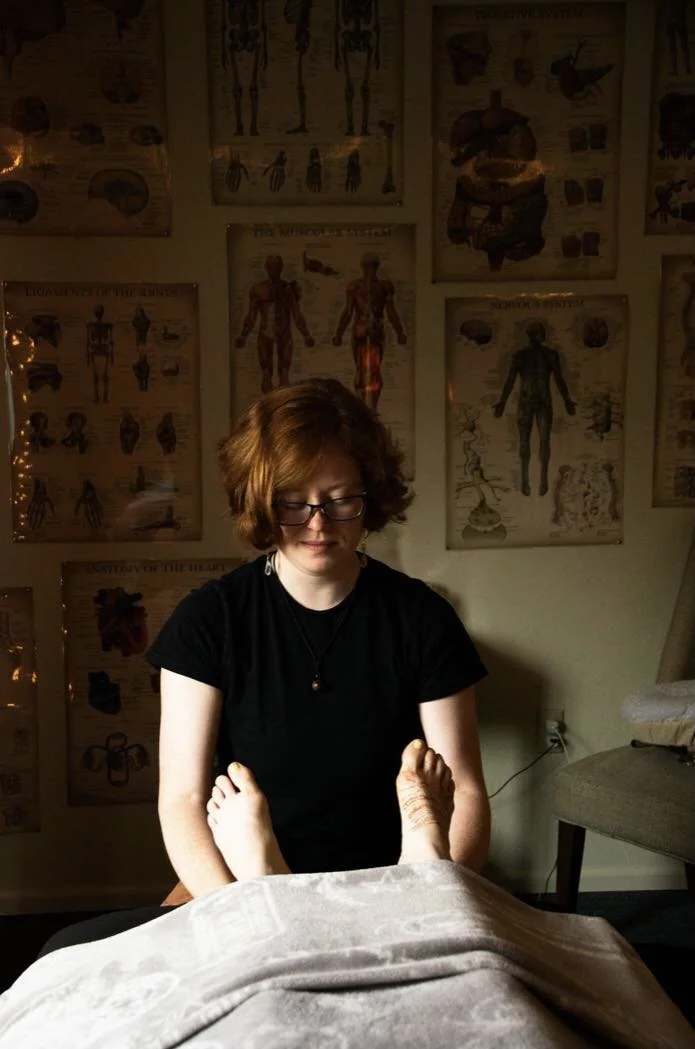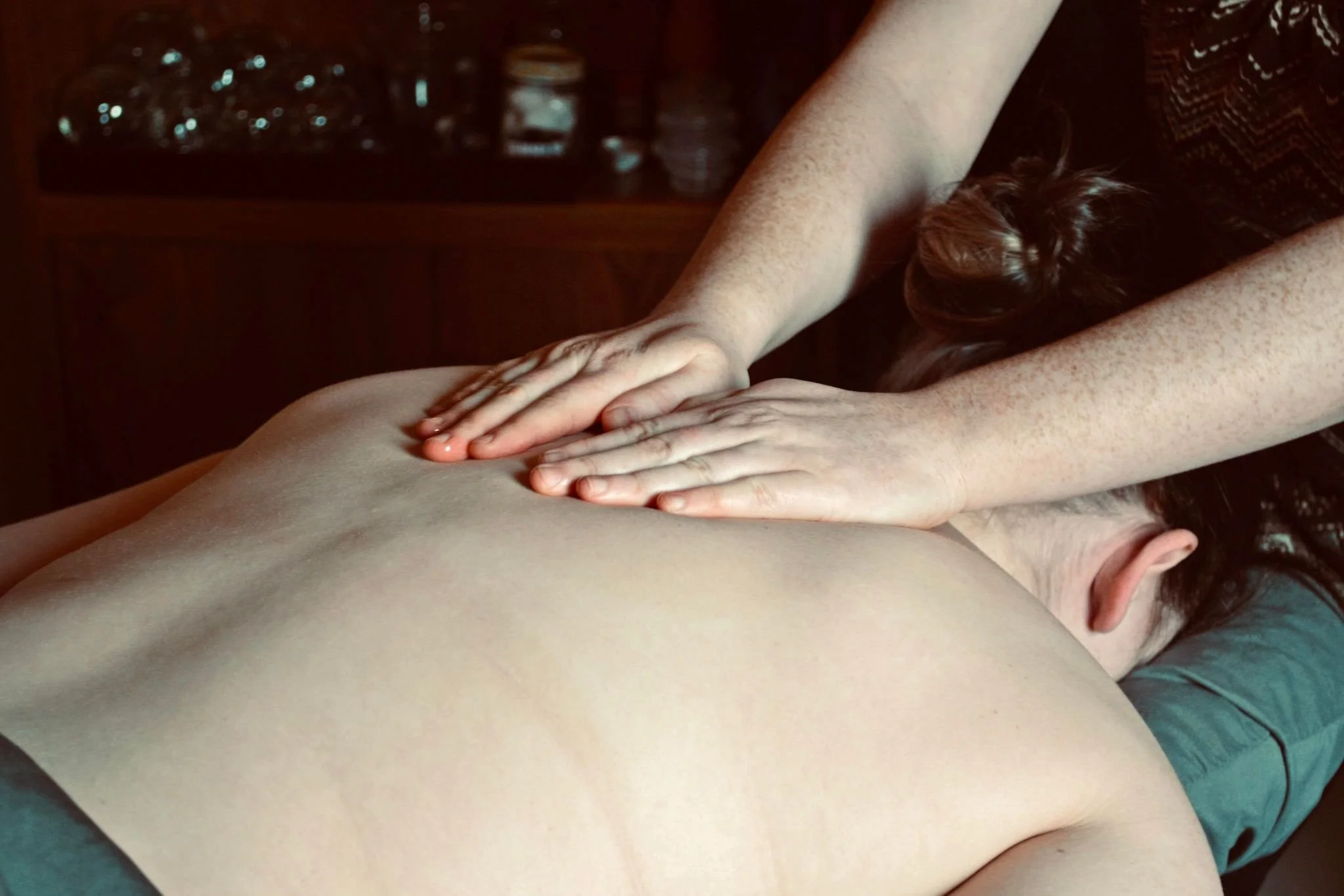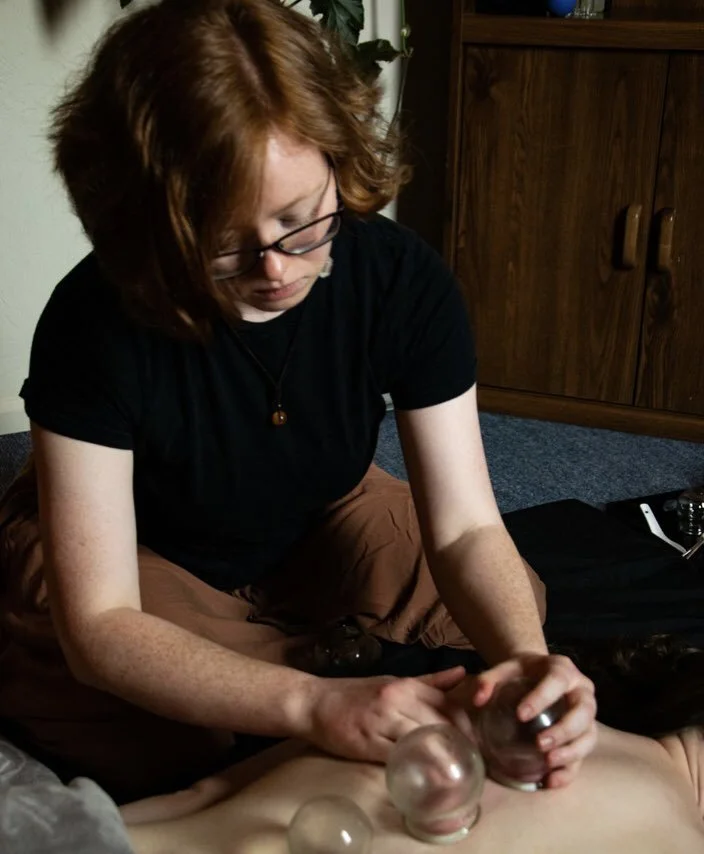
services
60 minute session
If you are looking for relaxation and stress relief, 60 minutes is ideal. We can also address one trouble area pretty deeply in an hour, but to really get into more than one, a longer session is recommended.
90 minute session
If you are looking to address one or two trouble areas deeply, 90 minutes is ideal.
120 minute session
In 120 minutes, we can address two or more trouble areas. Time enough to really get into things and address long standing patterns.
A session tailored to your individual needs.
I am trained in Thai bodywork, cupping, traditional Swedish massage, fascial work, cranialsacral, postural analysis, and more.
Whatever you walk in with, we will work together to create a treatment plan specifically tailored to you and your unique needs.
craniosacral Therapy
Craniosacral therapy is a subtle and non-invasive hands-on modality, ostepathic at its roots, that deeply impacts the nervous system.
Craniosacral is wonderful for treating: chronic pain, nervous system disorders, acute pain, supporting the mind-body connection, injury recovery, trauma healing, and more.
“When the nervous system is overstimulated, you are bound to feel unsafe in your body, unsupported by the world, lost, disconnected, unable to make wise, decisive choices, and without direction in your life.
As the nervous system unwinds, your attention expands to dissolve self-doubt, to enhance your interest in listening, and to guide you towards the most inspired choices that are always in reach.”
A little background on thai bodywork
I practice Thai bodywork as I learned through my lineage, the Lanna tradition. It’s traditional context is as a physical therapy- not necessarily always massage, and definitely not an entire session of stretching. This style of bodywork focuses on the layers of the body, as well as the five bodies recognized in the tradition. The physical body, the mental body, the emotional body, the energetic body, and the spiritual body.
Thai bodywork resides within the greater umbrella of traditional Thai medicine and Thai medical theory within the historical Thai medical system.
A session can range from incredibly subtle and gentle to very deep and intense. Because this model is so focused on the layers of the body, the work is done at the depth that the restriction is felt at. Usually, the session is done clothed, on a mat on the floor, though it can also be done sitting or on a table. Included may be manual therapy, balms and lineaments, cupping, and scraping.
If you’d like a greater overview of Thai medical theory, I highly recommend Nephyr Jacobsen’s Seven Peppercorns.
Swedish Massage
If traditional table work is what you’re looking for, Swedish massage is widely used for relaxation and tension relief. Long, gliding strokes and deeper kneading strokes help the body to relax muscles and improve blood flow. A session can be done on the full body or focus on specific areas of tension.
Fire Cupping
Cupping is used by many health traditions all over the world. Each medical system has its own variation, but the principal remains the same. Cupping creates negative pressure that pulls on the tissue instead of pushing into it, which is useful for many things! Cupping can be used to help loosen muscle tissue in areas of tightness and restriction, as well as helping the fascial system to find balance and smoother glide. It is also useful in pulling “stuck” waste material out of the tissue, which is what create the cupping marks that are often seen after a treatment. Often old injuries leave behind dead blood and dead cells that become “sticky and cold” over time, which can create pain and dysfunction.
Cupping helps to move this material to a more superficial layer of the body where it is more easily processed- often resulting in less pain.
It is also deeply relaxing to most people.
Some resources on cupping:
Health Traditions - A Cupping Mark is not a Bruise - Accredited Courses in Cupping and Gua Sha
Resources on Scraping:
Health Traditions - Gua Sha - Accredited Courses in Cupping and Gua Sha
Cupping Care
Cupping and scraping open up the skin layer- our protective layer. If you do not keep the area protected after a treatment, you can get sick.
After getting cupped or scraped, keep the treated area covered and warm. Do not get the area wet for at least 4 to 5 hours and try to stay out of the elements. Do not put ice on the area. If you think or know that you are going to be cupped in your session, please wear or bring a warm jacket and scarf.
It is recommended to consume warm, nourishing things after a cupping treatment, such as teas and soups.












